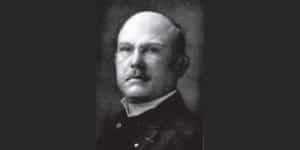Geert Hofstede biography, model and books

Geert Hofstede (1928 – 2020) was a Dutch organizational psychologist who enjoys an international reputation in the field of intercultural studies. Geert Hofstede is famous for his development of the Hofstede cultural dimensions Theory and model. This organizational culture model can help to identify cultural differences.
who is Geert Hofstede? His biography
Education of Geert Hofstede
Geert Hofstede graduated as a mechanical engineer (1953, Delft University of Technology) and obtained his Ph.D. in psychology cum laude from the University of Groningen in 1967.
He was Professor of Comparative Culture Studies of Organizations (CCSO) at Maastricht University. The former Institute for Research on Intercultural Co-operation (IRIC) of Maastricht University and Tilburg University continued Hofstede’s studies and have updated the measurement data.
Founder of the six Cultural Dimensions model and theory
Hofstede was widely known for his Hofstede cultural dimensions model that uses a number of dimensions that were identified by him as the indicator for cultural differences.
He developed the Hofstede cultural dimensions during a survey study within IBM in the 1960s. National and regional differences that influence the functioning of institutional organizations (such as authorities, families, companies, schools, ideas) were made clear and measurable because of his work.
The Hofstede cultural dimensions theory aims to provide information about cultural differences so that they can be bridged. More information on Geert Hofstede can be found at his website.
Famous quotes
- “Culture is more often a source of conflict than of synergy. Cultural differences are a nuisance at best and often a disaster.”
- “Studying culture without experiencing culture shock is like practicing swimming without experiencing water.”
- “We are; therefore, we evolve.”
- “Every person’s mental programming is partly unique, partly shared with others.”
Publications and books by Geert Hofstede et al.
- 2013. The boundaries of culture: Do questions about societal norms reveal cultural differences?, Journal of Cross-Cultural Psychology, Vol. 44 no. 7, 2013, 1094-1106.
- 2013. Managing time or timing management? In H. Helfrich, E. Hölter and I.V. Arzhenovskiy (Eds.), Time and Management from a Cross-Cultural Perspective, Boston, Hogrefe Publishing, 2013, 1-14.
- 2012. Is National Culture a Meaningful Concept? Cultural Values Delineate Homogeneous National Clusters of In-Country Regions”. Cross-Cultural Research Vol. 46 no 2, 2012; 133-59 (prepublication December 2011 on sagepub.com under DOI: 10.1177/1069397111427262).
- 2012. Hofstede’s fifth dimension: New evidence from the World Values Survey, Journal of Cross-Cultural Psychology, Vol. 43 no. 1, 2012, 3-14.
- 2011. Cross-cultural consumer behavior: A review of research findings, Journal of International Consumer Marketing, Vol.23, 2011, 181-92.
- 2011. The evolution of Hofstede’s doctrine. Cross Cultural Management: An International Journal, Vol. 18 no. 1, 2011, 10-20.
- 2010. Cultures and Organizations: Software of the Mind. McGraw-Hill.
- 2010. Long- versus short-term orientation: new perspectives, Asia Pacific Business Review, Vol. 16 no. 4, 2010, 493-504.
- 2010. The GLOBE debate: Back to relevance, Journal of International Business Studies, Vol.41 no. 8, 2010, 1339-46
- 2010. Comparing regional cultures within a country: Lessons from Brazil, Journal of Cross-Cultural Psychology, Vol. 41 no. 3, 2010, 336-52.
- 2010. The Hofstede model: Applications to global branding and advertising strategy and research. International Journal of Advertising, Vol.29 no. 1, 2010, 85-110.
- 2009. Business goals for a new world order: beyond growth, greed and quarterly results. Asia Pacific Business Review, Vol.15 no. 4, 2009, 481-88.
- 2009. American culture and the 2008 financial crisis. European Business Review, Vol. 21 no. 4, 2009, 307-12.
- 2009. Can dimensions of national culture predict cross-national differences in medical communication? Patient Education and Counseling, Vol. 75, 2009, 58-66.
- 2008. Are cultural dimensions relevant for explaining cross-national differences in antibiotic use in Europe? BMC Health Services Research, Vol. 8. London: BioMed Central – the Open Access Publisher, 2008.
- 2007. Asian management in the 21st century. Asia Pacific Journal of Management, Vol. 24 no. 4, 2007, 411-420.
- 2007. Culture: organisations, personalities and nations. Gerhard Fink interviews Geert Hofstede”. European Journal of International Management, Vol.1, nos ½, 2007.
- 2007. A European in Asia. Asian Journal of Social Psychology, Vol. 10, 2007, 16-21.
- 2006. What did GLOBE really measure? Researchers’ minds versus respondents’ minds. Journal of International Business Studies, Vol.37 no.6, 2006, 882-96.
- 2004. Diplomats as Cultural Bridge Builders. In H. Slavik (Ed.),Intercultural Communication and Diplomacy Malta and Geneva: DiploFoundation, 2004, 25-38.
- 2004. Business goals and corporate governance. Asia Pacific Business Review, Vol. 10 no. 3-4, 2004, 292-301.
- 2004. Personality and Culture revisited: Linking traits and dimensions of culture. Cross-Cultural Research, Vol. 38 no 1, 2004, 52-88.
- 2003. Culture’s Consequences: Comparing Values, Behaviors, Institutions and Organizations Across Nations. Sage Publications Inc.
- 2002. What goals do business leaders pursue? A study in fifteen countries. Journal of International Business Studies , Vol. 33 no. 4, 4th Quarter 2002, 785-803.
- 2002. Convergence and Divergence in Consumer Behavior: Implications for International Retailing. Journal of Retailing, 78, 2002, 61-69.
- 2002. Exploring Culture: Exercises, Stories and Synthetic Cultures. Nicholas Brealey Publishing.
- 2001. Cultural and Economic Determinants of Business Ownership across Countries. Frontiers for Entrepreneurship Research, 2001. Kauffman Center for Entrepreneurial Leadership Award.
- 2001. Comparing Behaviors Across Nations – Some Suggestions to Levine and Norenzayan. Cross-Cultural Psychology Bulletin, Vol. 35 no.3, September 2001, 27-29.
- 2001. Two Wonderlands: Japan and the Netherlands through the Looking-Glass. The International Scope Review, Vol. 3 no. 5, Summer 2001 (virtual journal on Internet).
- 2000. Whatever happened to Masculinity and Feminity? Cross-Cultural Psychology Bulletin, Vol. 34 no. 4, December 2000, 14-19 and 37.
- 1998. Attitudes, Values and Organizational Culture: Disentangling the Concepts. Organization Studies, Vol.19 no.3, 1998, 477-493.
- 1998. Identifying Organizational Subcultures: An Empirical Approach. Journal of Management Studies, Vol. 35 no. 1, 1998, 1-12.
- 1997. Riding the Waves: A Rejoinder. International Journal of Intercultural Relations, Vol. 21 no. 2, 1997, 287-290.
- 1996. Gender Stereotypes and Partner Preferences of Asian Women in Masculine and Feminine Cultures. Journal of Cross-Cultural Psychology, Vol.27 no.5, 1996, 533-546.
- 1996. An American in Paris: The Influence of Nationality on Organization Theories. Organization Studies , Vol.17 no.3, 1996, 525-537.
- 1995. Multilevel Research of Human Systems: Flowers, Bouquets and Gardens. Human Systems Management, Vol.5 no.3, 1995, 207-217.
- 1995. Culture’s Consequences and the Police: Cross-Border Cooperation between Police Forces in Germany, Belgium and the Netherlands. Policing and Society , Vol. 5, 1995, 1-14.
- 1994. A Case Study in Masculinity/ Femininity Differences: American Students in the Netherlands vs. Local Students, Journeys into Cross-cultural Psychology. Lisse NL., Swets and Zeitlinger, 1994, 329-347.
- 1994. Management Scientists are Human, Management Science, Vol. 40 No. 1, 1994, 4-13.
- 1994. Uncommon Sense About Organizations: Cases, Studies, and Field Observations. Sage Publications Ltd.
- 1993. Individual Perceptions of Organizational Cultures: A Methodological Treatise on Levels of Analysis, Organization Studies, Vol. 14 No. 4, 1993, 483-503.
- 1993. Cultural Constraints in Management Theories, The Executive, Vol. VII No. 1, 1993, 81-94.
- 1991. Management in a Multicultural Society, Malaysian Management Review, Vol. 25 No. 1, April 1991, 3-12.
- 1990. Measuring organizational cultures: a qualitative and quantitative study across twenty cases. Administrative Science Quarterly, Vol. 35 No. 2, June 1990, 286-316.
- 1989. Cultural predictors of national negotiation styles, Processes of International Negotiations. Boulder, Colorado, Westview Press, 1989, 193-201.
- 1989. Women in Management – A Matter of Culture. The International Management Development Review , Brussels, Management Centre Europe, Vol. 5, 1989, 250-254.
- 1988. The Confucius Connection: From Cultural Roots to Economic Growth. Organizational Dynamics, Vol. 16 no. 4, Spring 1988, 4-21.
- 1987. The Applicability of McGregor’s Theories in South East Asia. The Journal of Management Development , Vol. 6 no 3, 1987, 9-18.
How to cite this article:
Van Vliet, V. (2009). Geert Hofstede. Retrieved [insert date] from Toolshero: https://www.toolshero.com/toolsheroes/geert-hofstede/
Original publication date: 12/10/2009 | Last update: 12/09/2023
Add a link to this page on your website:
<a href=”https://www.toolshero.com/toolsheroes/geert-hofstede/”>Toolshero: Geert Hofstede</a>











